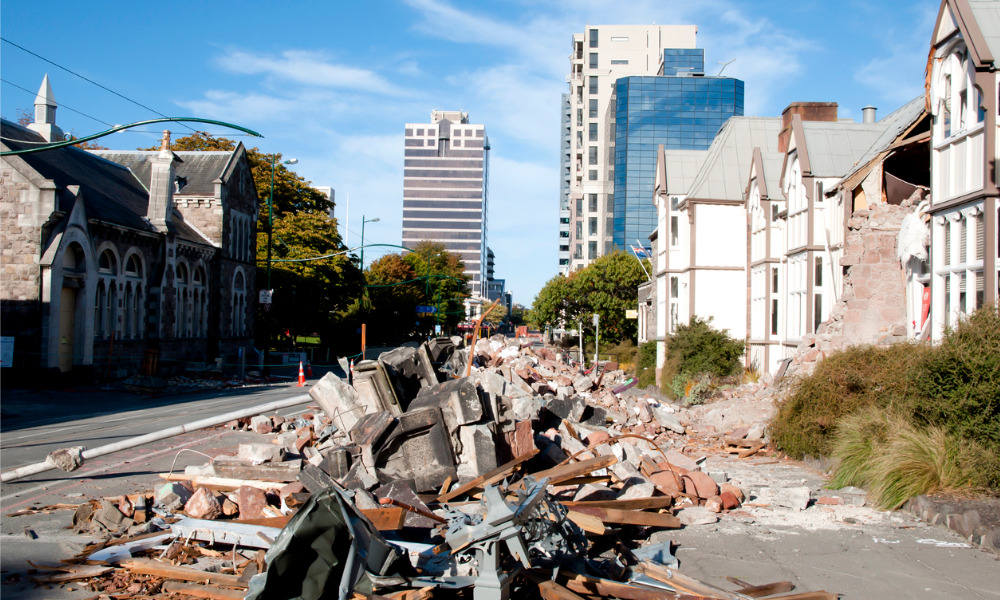
The property was beneath the cliffs damaged by the Canterbury earthquakes

The Supreme Court has upheld the Crown's measured duty of care, rejecting claims a property damaged by Canterbury earthquakes.
In Young v AG, [2023] NZSC 142, Steven Young owns the land beneath the cliffs that the 2010-2011 Canterbury earthquakes damaged. The earthquakes compromised the cliffs, leading to rockfall on Young's land. After the earthquakes, the cliffs remain unstable and at risk of further collapse onto Young's property.
Due to the ongoing instability, Young's land remained unsafe. Consequently, his property was "red zoned." The Crown made an initial red zone offer to buy his property and then an improved red zone offer. This offer was described as a "hybrid" because it was a mix of the types of offers made. However, Young rejected these offers. Instead, he commenced a suit in nuisance. Initially, he sought a declaration that the Crown should be required to remove the existing rockfall and remediate the risk of further rockfall and cliff collapse so that he could return to, reoccupy and restore his property.
The High Court dismissed his claim, finding that the rockfall risk was an actionable nuisance. Accordingly, the court found a "measured" duty on the Crown to do what was reasonable to prevent or minimise that risk. The Crown had no obligation to compensate Young fully for his loss.
Young appealed to the Court of Appeal. However, the court dismissed his claim, finding that there was an actionable nuisance, and the parties agreed that the duty was a "measured" duty to do what was reasonable. The Court of Appeal agreed with the High Court that the hybrid offer met the measured duty of the Crown.
Young raised the matter to the Supreme Court, arguing that the Court of Appeal was wrong to confirm the finding of the High Court that the hybrid offer met the measured duty of care. He asserted that the Supreme Court should make an award of damages for $2m, reflecting his assessment of broadly half of the value of the property he lost because of the instability of the Crown land. Alternatively, he sought an award of just over $1.2m in damages.
Young contended that there were options for remediating the property, enabling him to remain on and use some of his land.
The Crown argued that the courts below were correct, asserting that the relief Young sought assumed that the Crown was obliged to remediate the cliffs. The Crown maintained that remediation was not reasonable in all the circumstances and that its duty of care was discharged by making the hybrid offer in a situation where the only practical option to reduce the nuisance's effects was for Young to move away from the property. The Crown's duty was simply to facilitate his relocation. The Crown argued that the hybrid offer met that duty and, in doing so, discharged the Crown's obligation to take reasonable care.
The Supreme Court, in a unanimous decision, dismissed Young's appeal. The court explained that a landowner could be liable in private nuisance for harm originating in some natural condition of the land where the landowner knows or ought to have known of it but did not take reasonable steps to prevent it.
The court further said that "reasonable" requires a factual assessment, and the landowner's duty was a "measured" one, marking an obligation that was both tailored and restricted. Some relevant factors include practicability, whether the hazard was solely on the defendant's property or shared across both parties' properties, any underlying statutory framework, and whether remedial work would benefit both parties.
The court found that the remediation scheme proposed by one of the experts was estimated to cost at least $1.6m on top of the GST. The court said this could exceed the value of what was preserved and would not enable full use of the land or visual amenities.
The court also found that there would be implementation difficulties in obtaining the necessary resource consents, and the hazard was on the land owned by Young and purchased by the Crown. The court noted that the Crown only acquired the clifftop land in the context of a natural disaster to ensure equitable and safe outcomes.
Accordingly, the court said nothing further was required of the Crown than to warn Young of the risks and assist with access to his property. The court found that the Crown had done these things, and as a result, it had met its measured duty of care. Consequently, the Crown was not obligated to compensate Young for his loss in the manner he sought. Ultimately, the Supreme Court dismissed the appeal.